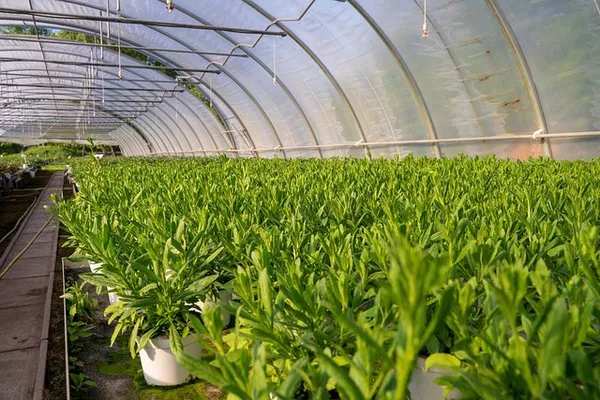In the grand tapestry of life, plants play a crucial role as the primary producers, harnessing the power of sunlight to synthesize their own food through a process known as photosynthesis. Yet, the intricacies of plant respiration, a lesser-known counterpart to photosynthesis, are equally fascinating and essential to the survival of these green organisms. In this article, we delve into the remarkable mechanisms that govern how plants breathe, exploring the journey of gases within the plant kingdom.
Photosynthesis and Respiration: An Interconnected Ballet
Before delving into the mechanics of plant respiration, it’s vital to understand the symbiotic relationship between photosynthesis and respiration. Photosynthesis, the process by which plants convert sunlight into chemical energy, occurs primarily in chloroplasts within plant cells. During this process, plants absorb carbon dioxide (CO2) and release oxygen (O2) as a byproduct. This exchange of gases is fundamental to maintaining the delicate balance of atmospheric composition.
However, the story does not end there. Plants, like all living organisms, also require energy for various metabolic processes. This is where respiration comes into play. In a sense, respiration can be viewed as the reverse of photosynthesis. During respiration, plants take in oxygen and release carbon dioxide, utilizing the stored energy from photosynthesis to fuel their cellular activities.
Stomata: The Gatekeepers of Gaseous Exchange
At the heart of plant respiration lies a crucial anatomical feature – the stomata. These microscopic pores, typically found on the surface of leaves, stems, and other plant organs, act as the gatekeepers for the exchange of gases between the plant and its surroundings. Comprising two specialized cells, guard cells, the stomata can open and close to regulate the influx and efflux of gases.
During daylight hours, when photosynthesis is actively taking place, stomata open to allow the entry of carbon dioxide for the process. Simultaneously, oxygen generated during photosynthesis is released into the atmosphere. This harmonious exchange ensures a continuous supply of carbon dioxide for photosynthesis, maintaining the plant’s energy production.
Conversely, during the night or under certain environmental conditions, stomata may close to minimize water loss through a process known as transpiration. While closed stomata limit the intake of carbon dioxide, they also reduce the loss of water vapor, showcasing the delicate balancing act that plants perform to thrive in diverse environments.
Cellular Respiration: Powering Plant Metabolism
Beyond the stomata, cellular respiration takes place within plant cells, providing the energy required for growth, reproduction, and maintenance. Unlike animals, where respiration occurs in specialized organs such as lungs, plant cells perform respiration throughout their structure.
Mitochondria, the powerhouses of the cell, are central to the process of cellular respiration in plants. Here, organic compounds produced during photosynthesis, such as glucose, are broken down in the presence of oxygen to release energy in the form of adenosine triphosphate (ATP). This energy currency fuels various cellular activities, ensuring the plant’s vitality.
The Importance of Oxygen in Plant Respiration
While plants are renowned for producing oxygen through photosynthesis, they are also consumers of this life-sustaining gas. Oxygen is vital for the breakdown of glucose in cellular respiration, facilitating the release of energy stored in organic compounds.
In plant roots, where oxygen levels may be lower due to soil compaction or waterlogged conditions, oxygen uptake is particularly crucial. Plants have evolved specialized structures, such as root hairs, to enhance oxygen absorption from the surrounding soil. This adaptation highlights the remarkable flexibility of plants to thrive in diverse environmental conditions.
Environmental Factors Influencing Plant Respiration
The efficiency of plant respiration is intricately linked to environmental factors, influencing the rate at which plants exchange gases. Temperature, for instance, plays a pivotal role in respiratory processes. Warmer temperatures generally enhance metabolic rates, leading to increased respiration. However, extreme temperatures can also pose challenges, as excessive heat may disrupt cellular processes.
Additionally, factors like humidity, light intensity, and the availability of water can impact plant respiration. Understanding these environmental influences is essential for predicting how plants respond to changing climatic conditions, providing valuable insights for agricultural practices and ecosystem management.
Conclusion
In the silent dance of botanical respiration, plants reveal a complex and finely tuned symphony of processes that sustain life on Earth. From the orchestrated opening and closing of stomata to the cellular intricacies within plant cells, the journey of gases through the plant kingdom is a testament to the resilience and adaptability of these green organisms.
As we continue to unravel the mysteries of plant respiration, we gain a deeper appreciation for the interconnectedness of all living things. From the air we breathe to the food we eat, plants play an indispensable role in shaping the world we inhabit. The study of plant respiration not only enhances our understanding of fundamental biological processes but also holds the key to addressing pressing environmental challenges in an ever-changing world.


